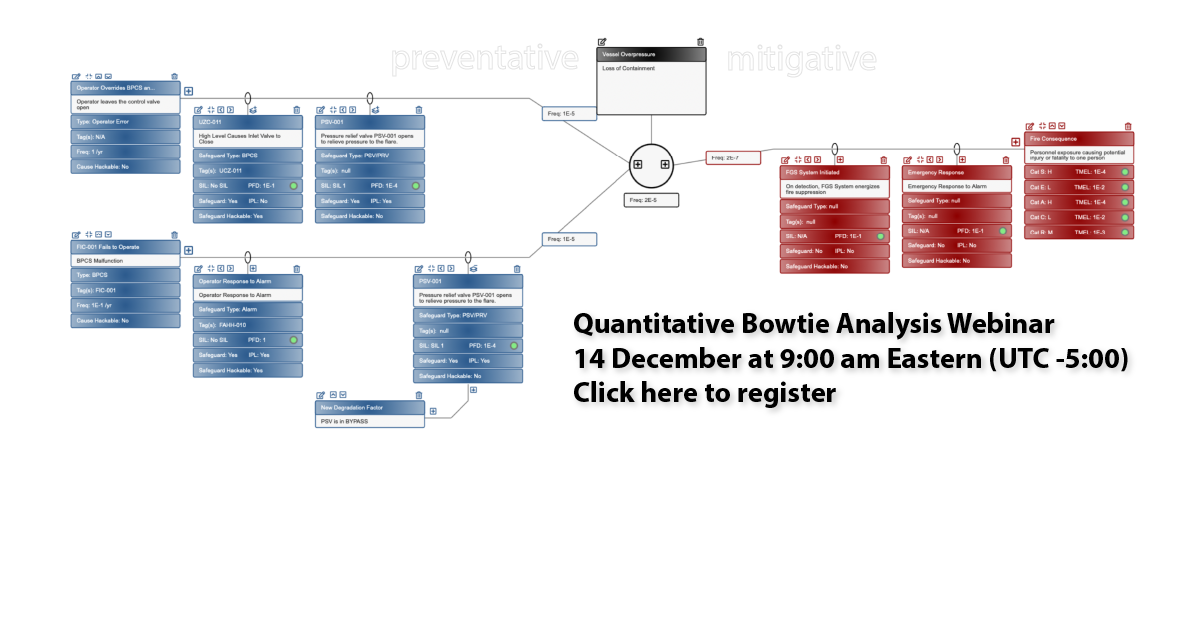Research into Unified Hazard Assessment combining HAZOP, LOPA, and Quantitative Bowtie Analysis has yielded techniques that elegantly address the limitations of LOPA and provided a significantly improved graphical communications method.
LOPA suffers limitations that are rooted in “one-cause, one-consequence” paradigm. This limitation can result in design errors where engineered safeguards that protect against a consequence with multiple causes can be under-designed by looking at one cause and a time. While some extensions of LOPA that address the issue of multiple causes are commonly used, mitigative safeguards are rarely appropriately addressed and designed.
Safeguards that reduce the magnitude of consequences (i.e., mitigate) instead of preventing loss of containment cannot be addressed at all without ignoring the residual consequence that exists even if the safeguard activates successfully.
Finally, the textual nature of the process also makes results hard to communicate to operations and management.
This webinar will provide background on how Unified Hazard Assessment yielded the techniques of Quantitative Bowtie analysis. The webinar will also describe in detail how to implement quantitative bowtie analysis along with the mathematical concepts used for quantification of risk for multiple causes and multiple consequences inside a single scenario. The concepts will be presented using example studies that include mitigative safeguards and multiple cause scenarios.

